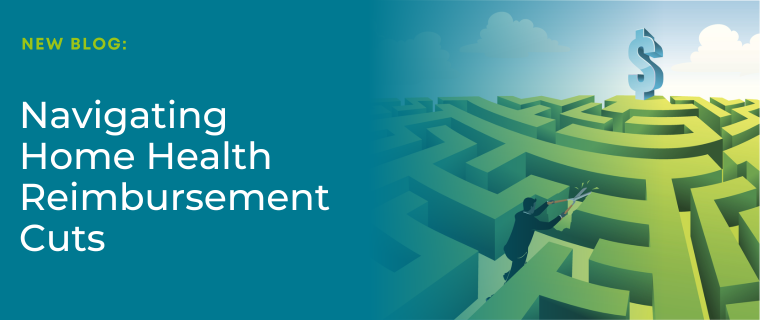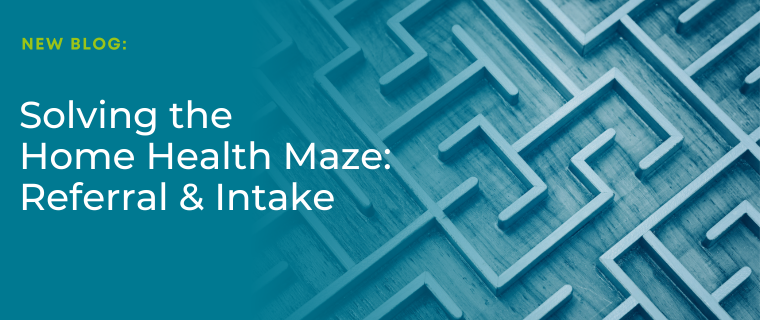How to Build a Successful Utilization Strategy
It Starts with Addressing the Operational-Clinical Collide
By now, we have accepted it as a fundamental truth: Thanks to tight margins under PDGM, getting utilization right is absolutely critical. And while its far from a new concept, it’s time for the way in which we think and talk about utilization management to evolve. If our hope is to make intentional, responsible utilization ubiquitous to our provision of care, the whole idea of utilization management needs some serious rebranding.
Somewhere along the way, utilization got a bad reputation.
We began thinking of it as a discrete process, an isolated function performed primarily with financial considerations in mind. And because the difficult task of managing utilization has traditionally fallen within the purview of operations, many clinicians have come to feel limited and marginalized by the whole arrangement. As an unfortunate result, responsible utilization management has been unfairly conflated with restricting clinical judgement, leading to a widespread perception that managing utilization is somehow inherently at odds with quality, patient-centered care.
So, let’s start reframing our concept of utilization management.
Rather than visualizing a grid with diagnoses and visit numbers, instead imagine a therapist wrapping up an assessment and calling the nurse case manager to discuss goals for the patient. Instead of talking about how we can reduce visits per episode, let’s have conversations around deploying resources in a way that supports the patient without overwhelming him. We must begin retraining ourselves to think about utilization management as the intersection of being good stewards of the business and providing high quality patient care.
While a “one-size-fits-all” approach to utilization management simply is not viable under PDGM, the development and consistent execution of processes designed to arrive at a unique plan of care for each patient is a must.
So, how do we put this inclusive, holistic version of utilization management into practice (grids NOT included)?
Involve your patient.
Cultivating patient engagement from the outset is crucial to success under PDGM. Setting goals for a patient without first understanding his or her own goals for care creates a foundation of misalignment. The absence of alignment on the most basic element of care—what you’re trying to achieve—may result in a lack of motivation or active participation by the patient, both of which are critical to providing efficient care. As the episode progresses, this will likely lead to less productive visits and plan of care variance.
Fostering trust and maintaining an open dialogue with your patient is crucial. The clinicians may have their hands on the wheel and feet on the gas, but the patient ultimately holds the keys to the car.
Sync with your team.
The care team should begin by aligning on the most fundamental question: What is the most acute need of this patient? Establish what interventions are needed most urgently, and then discuss what disciplines are appropriate at the outset. Consider whether there might be a particular combination, sequence or cadence of disciplines that will best support the patient fully realizing the benefit of treatment. For example, will a patient be able to fully participate in physical therapy if her post-operative pain is not effectively controlled?
The goal should never be to reduce visits or eliminate disciplines, but to create a plan of care and deploy resources in such a way that maximizes the value of every single visit for the benefit of the patient.
Rinse and repeat.
Patient engagement and team collaboration are not merely boxes to be checked at the start of the episode and then forgotten. Rather, they are routines to be established and consciously maintained throughout the episode. Frequent evaluation and discussion of goals with your patient and ongoing interdisciplinary collaboration may result in necessary modifications to the initial plan of care… and that’s OK!
The key is to put your team in a position of being proactive rather than reactive, allowing them to course correct in a thoughtful, purposeful way.
Ultimately, utilization management is simply a matter of being intentional about the way in which we provide care to patients. It should not pull the focus of that care away from the patient, but rather encourage the mindful consideration of each patient’s unique circumstances and needs, and then plan accordingly. Optimizing utilization by reducing redundancy in care and capitalizing on the full value of each home health visit are crucial to staying afloat under PDGM.
And at the end of the day, doing the right thing by our patients will result in doing the right thing for the business.
Related Blogs

Navigating CY 2025 Home Health Reimbursement Cuts: Medalogix Offers Innovative Solutions to Enhance Efficiency and Outcomes
As the Home Health industry grapples with the CY 2025 proposed rule, we ...

Solving the Home Health Maze: Referral & Intake
The CMS Office of Burden Reduction & Health Informatics (OBRHI) coll...

Medalogix Muse and the Proposed Regulatory Changes for FY 2025
Steven Shelton, MBA, MSN, RN, CHPN; Director, Clinical Services In th...


